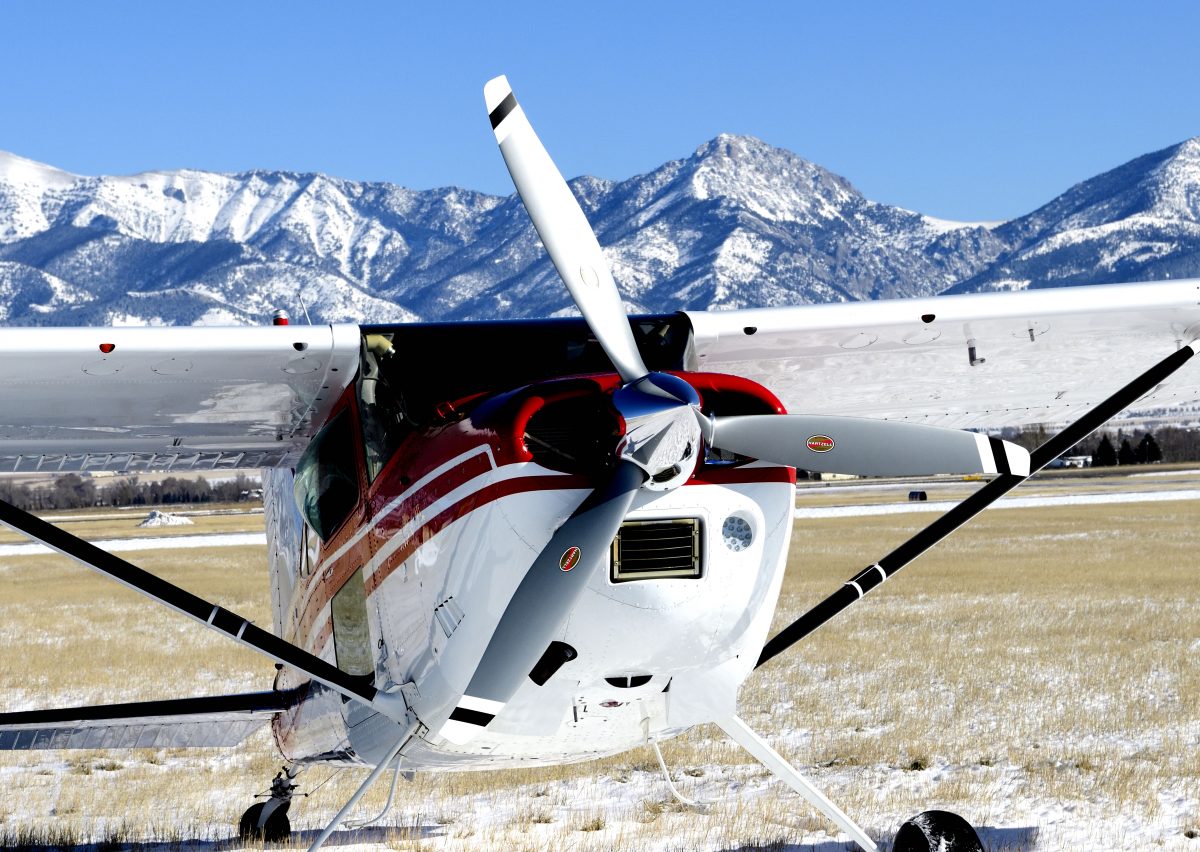
Winter weather is underway, which means many pilots are starting to prepare their airplanes for winter hibernation. Whether or not you have access to a temperature-controlled hangar, it’s important to take steps to protect your airplane during the winter storage period.
Follow these tips to keep your airplane in tip-top shape while storing it for a long winter’s nap:
The first thing you can do before storing your airplane is to clean it thoroughly inside and out. Wash the exterior, including the aircraft propeller, to protect the paint and remove dirt, dead insects, grime, and any fluid streaks. As you move on to the interior, toss out any trash, vacuum the carpets and seats, and wipe down the avionics displays with a clean, lint-free cloth and an appropriate cleaner.
Most importantly, leave no trace of food crumbs, which can attract all kinds of critters to nest inside your aircraft. Rodents, in particular, can wreak havoc on wires and other important internal components. Stuffing a few dryer sheets inside the cockpit is a better-smelling alternative to mothballs and can help make your airplane’s interior less appealing to critters. Be sure to use pitot tube and static vent covers to avoid giving pests any easy entry points.
After a busy summer and fall flying season, your airplane’s engine is likely due for an oil change. The last thing you want is to store your airplane with old oil because the dirt and contaminants in the oil can lead to harmful rust and corrosion. DIY oil changes are a great way to save money, get up close and personal with your airplane, and keep an eye on the health of your engine and other components. If you’re located near an ocean, lake, or another type of humid environment, adding a preservative oil mixture may be recommended to prevent corrosion during the winter storage period. As always, be sure to follow your engine manufacturer’s instructions carefully.
It may seem counterintuitive to fill up your fuel tank when you’re not planning on flying anytime soon, but storing your plane with an empty tank of gas can cause damage to your fuel system. Keeping your fuel tank full will limit condensation build-up and help protect against corrosion in your fuel system. Avgas typically has a shelf life of one year, so you don’t have to worry about wasting fuel.
After months of sitting in storage, chances are slim that your airplane’s battery will hold enough of a charge to start when springtime rolls around. To help extend the life of your battery, you could simply remove it and store it in a warmer location during the winter months. Or, use an aviation-specific trickle charger every few weeks to keep your battery in good condition. It’s generally not recommended to use ordinary automotive battery chargers on aircraft batteries. Automotive batteries are heavier and have a larger capacity, which means they charge at a high rate that can be damaging to lightweight, compact aircraft batteries.
If your airplane will be tied down outdoors this winter and exposed to the elements, do your best to cover and protect all surfaces against the threat of rain, snow, frost, and ice. This includes using covers for the canopy, propeller blades, and tail. Even sunny winter days can cause damage to the panel and upholstery, so cover up the windows, too. If you’re using a shared hangar space, appropriate covers and propeller tags will let others know that your airplane has been preserved for the winter and shouldn’t be moved.
One final tip is to avoid taking your airplane out of winter hibernation for a short “ground run” and then storing it again. Starting your airplane without going for an actual flight will cause your engine to heat unevenly, causing unnecessary stress. It’s best to wait until you’re ready for your first flight in the spring.
It’s well worth taking your time and following the proper steps to get your airplane ready for winter storage. A little extra effort and preparation will go a long way in protecting your investment so you can get back in the skies come springtime.
If you have any questions for the Hartzell Propeller technical team about cleaning, storing, and maintaining your airplane propeller, contact us today. We’re happy to help!
Are you planning on flying this winter? Stay tuned for next week, when we’ll share tips on how to effectively prep your airplane for cold-weather flying.